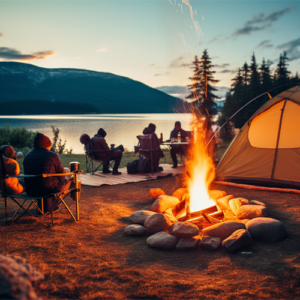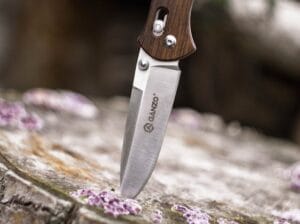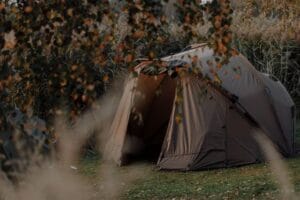Why a Bushcraft Poncho Is Worth Packing
A bushcraft poncho does more than just keep you dry during unexpected rain. It’s a versatile piece of gear that can serve multiple purposes when you’re out in the woods.
I’ve found that the right poncho can make a big difference in how well you handle rough conditions. Whether you need quick rain protection, a makeshift shelter, or even a ground cover, a bushcraft poncho provides practical solutions without taking up much space in your pack.
Here’s what I consider when choosing a poncho and why certain features matter more than others.
Material Matters: Balancing Durability and Weight
A bushcraft poncho needs to be durable enough to withstand rugged use while still being light enough to carry easily.
I prefer ponchos made from ripstop nylon or polyester with a waterproof coating. These materials resist tears better than cheaper options and can handle brush and rough ground without falling apart.
I’ve used ripstop ponchos that survived snagging on branches and scraping against rocks, and the reinforced weave held up well.
Weight also matters, especially if you’re trying to keep your gear light. While heavier ponchos offer better durability, they can become a burden if you’re covering a lot of ground.
I aim for something that balances strength with packability.
A mid-weight poncho, around 1-1.5 pounds, provides a good mix of toughness and portability. You don’t want a poncho that’s so flimsy it tears easily, but you also don’t need one that feels like you’re carrying a tarp made of lead.
Waterproofing: Keeping the Rain Out
The primary function of a poncho is to keep you dry, so waterproofing is crucial. Look for ponchos with a reliable waterproof coating, such as polyurethane or silicone-treated fabric.
I’ve found that ponchos with taped seams perform better in heavy rain, as the seams are often where water finds its way in.
A hood with a drawstring helps keep water from trickling down your neck, and some ponchos even have adjustable cuffs to prevent water from running up your arms.
Breathability is another factor to consider. A fully waterproof poncho can trap heat and sweat, making you feel damp from the inside. To avoid this, I look for ponchos with ventilation features, such as underarm zippers or mesh-lined vents.
While it won’t keep you as cool as a fully breathable jacket, it does help manage moisture buildup. I’d rather have a slightly heavier poncho that breathes than one that’s just a glorified plastic sheet.
Versatility: More Than Just Rain Protection
One of the biggest advantages of a bushcraft poncho is its versatility. I’ve used my poncho not just as rain gear but also as a shelter, ground cover, or even a makeshift pack cover.
When the weather turns bad and you don’t have time to set up a full tarp, a poncho with grommets or reinforced loops can be strung up as an emergency shelter.
I’ve done this more than once, and while it’s not as sturdy as a dedicated tarp, it does the job when you need quick cover.
A poncho can also serve as a groundsheet to keep your gear dry or as a windbreak for your fire. If you’re caught out in bad weather with limited options, a good poncho provides flexibility in how you use it.
This multipurpose nature is why I always pack one, even if the forecast looks favorable. It’s one of those items that can solve multiple problems without taking up much room in your kit.
Fit and Coverage: What to Look For
A poncho needs to offer enough coverage to protect you and your gear.
I prefer ponchos that extend at least to my knees and have a generous cut to cover my pack as well. Some models come with extensions or snaps to adjust the size, which can be helpful if you’re wearing a larger pack.
I’ve used ponchos that were too short or narrow, and they ended up leaving parts of me and my gear exposed. Make sure there’s enough material to keep everything dry, especially when you’re moving.
The fit shouldn’t be too loose, though, as excess fabric can get in the way or catch on branches.
I look for ponchos with side closures or adjustable cords that help cinch it in place. If it’s too baggy, you’ll end up fighting with the wind as much as the rain.
A hood with a good fit and adjustable opening keeps the rain out of your face without blocking your view, making it easier to move through the woods.
Practical Examples That Have Worked for Me
1. Helikon-Tex Swagman Roll
The Helikon-Tex Swagman Roll goes beyond the typical poncho by offering added insulation, making it versatile for a variety of outdoor scenarios.
The design combines a waterproof outer layer with a synthetic insulated lining, which provides extra warmth and protection from the elements.
I’ve used it as a poncho, blanket, and even a sleeping bag liner in colder weather, and it performs well in all roles. The adjustable hood and fasteners keep the fit snug, while the overall build quality ensures durability.
The downside is its weight, as it’s heavier than standard ponchos, which might not appeal to those trying to travel light. Still, the Swagman Roll is a great choice if you’re looking for an all-in-one piece of gear that can handle multiple tasks in the field.
Pros: Insulated for added warmth, multifunctional design, durable construction.
Cons: Heavier than traditional ponchos, not ideal for lightweight packing.
2. Mil-Tec Ripstop Poncho
The Mil-Tec Ripstop Poncho is a straightforward option that gets the basics right without costing much. Made from ripstop polyester with a waterproof coating, it provides reliable rain protection while maintaining a lightweight feel.
The grommets along the edges allow it to double as an emergency tarp or shelter, which adds to its versatility.
The material holds up well against light wear and tear, though it isn’t as rugged as higher-end options. It’s not the most breathable poncho out there, so it may trap some moisture during high activity.
However, for those looking for an affordable, practical poncho that can handle standard bushcraft tasks, the Mil-Tec Ripstop Poncho fits the bill.
Pros: Affordable, lightweight, can double as a tarp.
Cons: Limited breathability, less durable than premium models.
Knowing When a Poncho Isn’t Enough
While ponchos are versatile, they have limitations. In heavy winds, they can become difficult to manage, especially if you’re trying to use them as a shelter.
In colder weather, a poncho won’t offer the same insulation as a proper jacket, so it’s better suited as an outer layer over other warm clothing.
When I know I’m facing extreme conditions, I still bring a dedicated jacket or tarp to complement my poncho. It’s a versatile tool, but it’s not a one-size-fits-all solution.
Final Thoughts
A bushcraft poncho isn’t just for rain. It’s a versatile piece of gear that adapts to different situations, providing more value than you’d expect from a simple waterproof layer.
When you pick the right poncho, you get a tool that’s useful for more than just staying dry—it’s an all-around problem solver that’s always worth the space in your pack.
Whether you use it as a shelter, ground cover, or emergency windbreak, a good bushcraft poncho will earn its place in your kit.
You might as well be interested in
-

A new sample Post by me
Lorem ipsum dolor sit amet, consectetur adipiscing elit. Pellentesque imperdiet tincidunt augue, sit amet pharetra massa condimentum varius. Ut condimentum turpis blandit augue ultricies porta.…
-
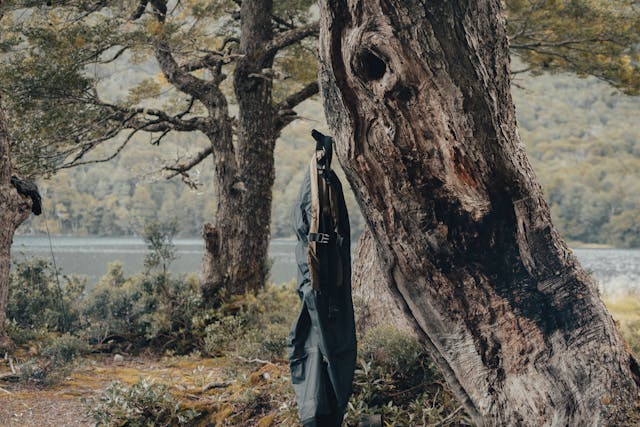
Best Bushcraft Pants: Tough, Comfortable, and Built for the Outdoors
What to Look for in Bushcraft Pants Finding the right bushcraft pants isn’t about following the latest trends. When you’re out in the woods, durability,…
-
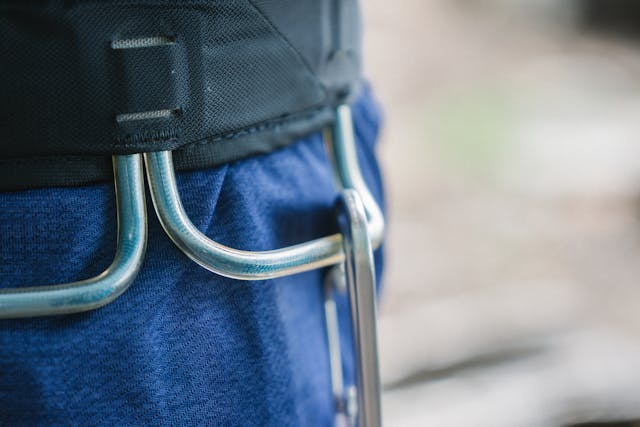
Bushcraft Belt: Choosing the Right One for the Outdoors
Why a Good Bushcraft Belt Matters A solid bushcraft belt is more than just a way to keep your pants up. When you’re out in…
-

Bushcraft Coats: Staying Warm and Dry in the Woods
Why the Right Bushcraft Coat Matters A good bushcraft coat isn’t just about staying warm—it’s about staying functional in the field. When I’m out in…
-

Wool Bushcraft Blankets That Deliver Warmth and Toughness in the Wild
Why I Pack a Wool Bushcraft Blanket A wool bushcraft blanket is one of the most useful pieces of gear I carry in the woods.…
-

Wool Anoraks for Bushcraft: How to Stay Cozy in the Wild
Why a Wool Anorak Works for Bushcraft Regarding bushcraft, a wool anorak provides warmth, comfort, and durability that other materials often struggle to match. The…
-
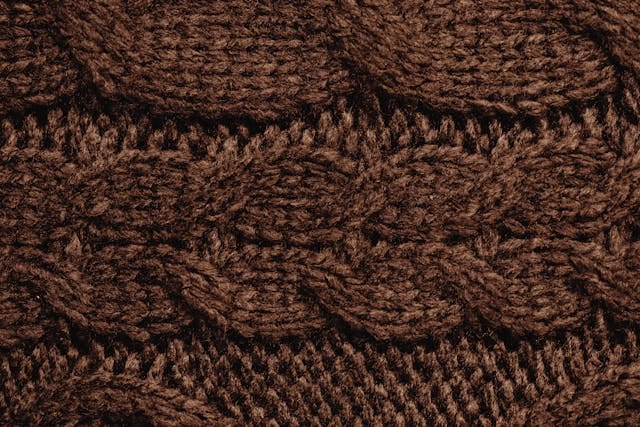
Bushcraft Wool Hoodies That Deliver: Warmth, Comfort, and Durability in the Woods
Why a Bushcraft Wool Hoodie Makes Sense A bushcraft wool hoodie isn’t just another layer—it’s one that works well in the woods where conditions change…
-
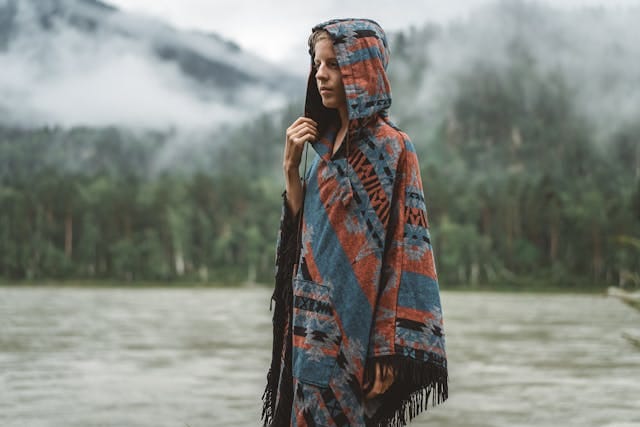
Bushcraft Ponchos That Work: Stay Dry and Ready for Anything
Why a Bushcraft Poncho Is Worth Packing A bushcraft poncho does more than just keep you dry during unexpected rain. It’s a versatile piece of…
-

Bushcraft Jackets That Get the Job Done: Stay Warm, Dry, and Comfortable
Why the Right Bushcraft Jacket Makes a Difference A solid bushcraft jacket isn’t just about keeping warm. It’s about having the right protection and comfort…
-
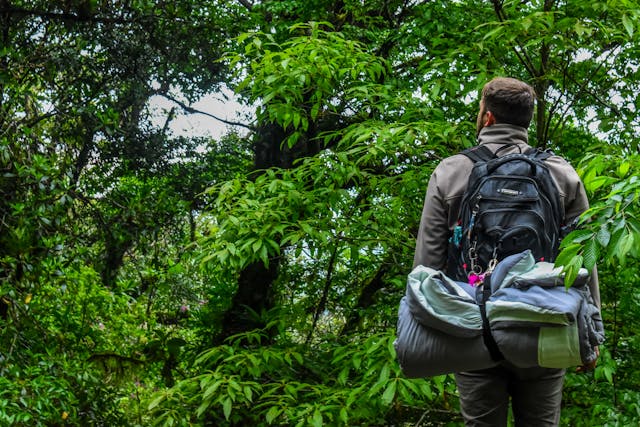
Bushcraft Clothes – How To and Why
Bushcraft Clothes: Dressing for the Wild When I head into the wilderness, choosing the right clothes becomes a crucial part of my preparation. Bushcraft clothing…

